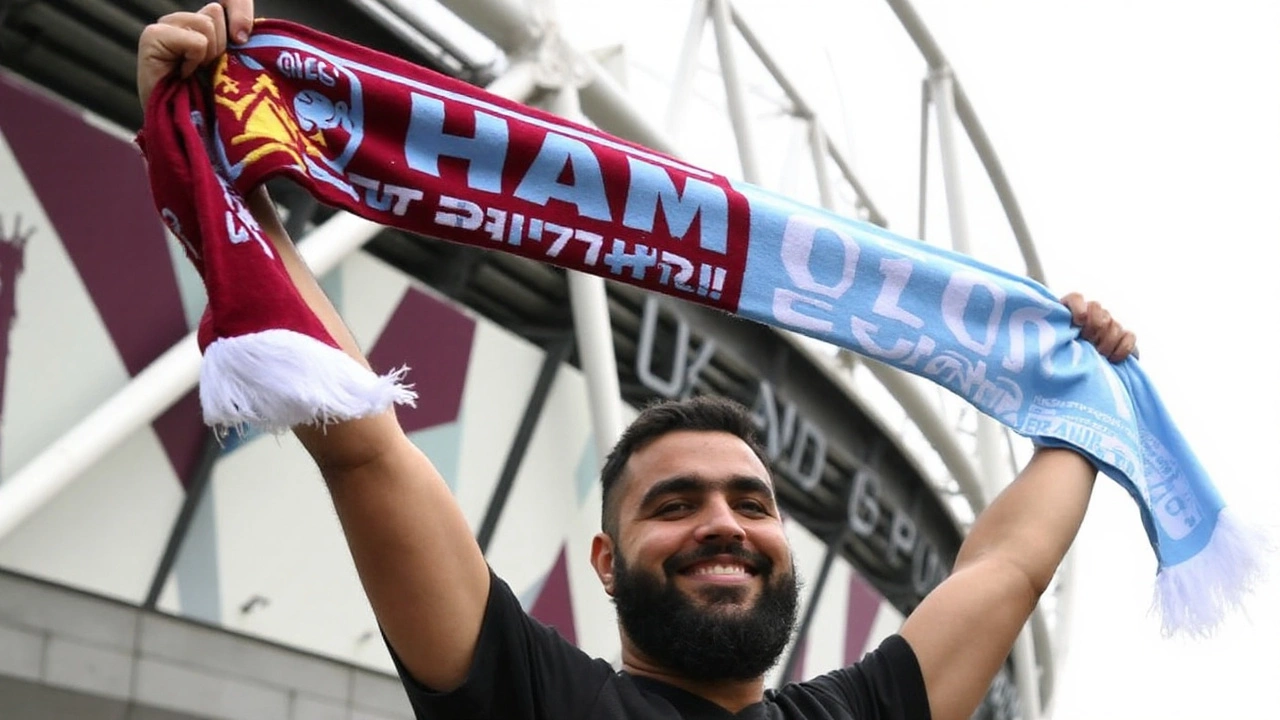Big crowd, big stakes, and a patched-up visiting squad. Before 62,459 fans at the London Stadium, West Ham vs Tottenham arrived with confirmed lineups that said plenty about where both teams are in Round 4: West Ham steady and structured, Spurs inventive and forced into tweaks by injuries. Premier League official Jarred Gillett had the whistle.
Team news and confirmed lineups
West Ham went 4-2-3-1 with Mads Hermansen in goal. The back four featured Kyle Walker-Peters at right-back, Konstantinos Mavropanos and Max Kilman in central defense, and Malick Diouf on the left. Tomas Soucek and James Ward-Prowse formed the double pivot, keeping things simple on the ball and tight without it. Ahead of them, Jarrod Bowen, Mateus Fernandes, and Crysencio Summerville supported Lucas Paquetá, who led the line in a drifting, false-nine style role.
Tottenham matched up with a 4-3-3. Guglielmo Vicario continued in goal after a strong run of shot-stopping numbers to start the season. The back four: Pedro Porro, Cristian Romero, Micky van de Ven, and Djed Spence. In midfield, Lucas Bergvall, Joao Palhinha, and Pape Sarr offered a mix of ball-carrying, bite, and energy. Up front, Mohammed Kudus, Mathys Tel, and Xavi Simons gave Spurs pace and creativity from all angles.
The injury list shaped the away side’s approach. Tottenham were without six first-teamers: Kota Takai, Radu Dragusin, Dejan Kulusevski, James Maddison, Yves Bissouma, and Dominic Solanke. That’s defending, build-up, and chance creation all hit at once. West Ham had a cleaner bill of health but still missed George Earthy.
- West Ham unavailable: George Earthy (injury)
- Tottenham unavailable: Kota Takai, Radu Dragusin, Dejan Kulusevski, James Maddison, Yves Bissouma, Dominic Solanke (injuries)
Two pre-match markers stood out. First, Tottenham’s recent scoring tick: seven goals in their last five matches, even with key attackers out. Second, Vicario’s early-season form; he led the league in saves per match at 4.3 coming in, a mix of elite reflexes and a busy workload. Pape Sarr, meanwhile, had created Spurs’ most notable big chance so far, hinting at his growing influence in the final third.
Tactics, match-ups, and what to watch
West Ham’s 4-2-3-1 looked designed for control and set-piece danger. With Ward-Prowse and Soucek anchoring midfield, the hosts had a stable base to spring transitions. Ward-Prowse’s delivery remains a cheat code from dead balls, and with aerial targets like Mavropanos, Kilman, and Soucek, Spurs had to be spotless on near-post and second-ball duties. Tottenham couldn’t afford cheap fouls around the box.
Paquetá’s role at the tip of the shape was about space, not a fixed position. He dropped into pockets to drag a center-back out, then spun play to runners. Bowen’s diagonal darts inside the right half-space and Summerville’s direct sprints at the left edge put stress on Tottenham’s back line. If Porro pushed forward, Summerville had room to run. If Spence tucked in narrow to help Romero and van de Ven, West Ham could angle switches into Walker-Peters to keep the pitch wide and force longer defensive slides.
Tottenham’s 4-3-3, on paper, had balance: Palhinha to destroy, Sarr to carry, Bergvall to connect. The big question was how high they pressed without Maddison and Kulusevski shaping the first line of pressure. Kudus offers pace and power on the right, cutting in to shoot or slipping passes into Tel’s runs behind. Tel’s movement stretches center-backs, and when he pulls wide, Simons can step into the half-spaces to combine with the advancing fullback. That interplay forced West Ham’s midfield to decide: stick tight to Simons or screen the lane into Tel?
Porro’s forward surges are a core Tottenham outlet. But every overlap is a risk against a winger like Summerville, who can turn and attack the space behind. Spence on the opposite flank gives a different profile—more conservative positioning, simpler passing angles—so Spurs didn’t overexpose both sides at once. Expect Palhinha to shuffle across to cover when Porro takes off, with Sarr dropping a gear to block the counter channel.
Inside the game, the Romero–van de Ven partnership had to handle unusual tasks. With Paquetá drifting, they needed clear handoffs: Does Romero step into midfield, or does Palhinha take first contact? Quick decisions there matter because Bowen can burst through on second balls. If Spurs got the trap right, they could spring forward through Sarr, who has the legs to break lines and the timing to find Kudus or Simons early in space.
For West Ham, the first passes out from Hermansen were part of the plan. He’s comfortable enough to play into Ward-Prowse or split to the fullbacks, inviting Spurs to commit and then flipping the angle to Bowen. The hosts also had a straightforward outlet: hit Paquetá to feet, draw a foul, and let Ward-Prowse load up the set piece. Every corner and deep free-kick felt like a moment.
Midfield duels would tell you the story. Soucek versus Sarr for second balls. Palhinha versus Paquetá between the lines. Bergvall’s calm touches under pressure against West Ham’s tight block. If Spurs could get Simons receiving on the half-turn between the lines, they had a route to shots at the top of the box. If West Ham kept those pockets crowded, Tottenham’s width would have to do the heavy lifting, with Porro’s final ball under the microscope.
Spurs’ bench options were limited by injuries, so the visitors were likely to lean on system tweaks rather than big-name cameos. That might mean flipping Kudus and Simons to disrupt West Ham’s match-ups or asking Tel to drift left to isolate a center-back. West Ham, by contrast, had the luxury of rhythm—same core, clear roles, and a steady supply of set pieces to reset the tone whenever the game got frantic.
Beyond the Xs and Os, the stakes were simple. Early-season points set a platform. In a London derby with this kind of energy, control is currency. Keep the ball in the right zones, manage transitions, and don’t gift free-kicks in Ward-Prowse territory. For Tottenham, Vicario’s form and that front three’s speed gave them real punch, even with half the attack room in the treatment area. For West Ham, compact lines, quick breaks, and the dead-ball edge promised chances without needing long spells of possession.
By kickoff, the picture was clear: two teams with different paths to the same target—momentum. West Ham trusted structure and set pieces; Tottenham banked on pressing triggers and individual spark. Gillett’s light touch and a full house only added to the tempo. Round 4 rarely feels this loaded, but this one did.



